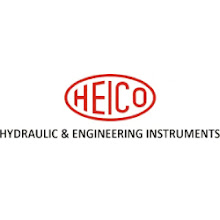A hydraulic machine is a device that uses fluid power to do work. It operates by transmitting force through a fluid, typically oil or water, that is contained within a closed system. Hydraulic machines are used in a wide range of applications, from heavy construction equipment to automotive brakes and power steering systems.
Some common examples of hydraulic machines include:
Hydraulic presses: used for pressing, molding, or punching materials
Hydraulic cylinders: used to generate linear force for lifting or pushing
Hydraulic motors: used to generate rotary motion for powerikng machinery
Hydraulic pumps: used to convert mechanical power into hydraulic power, supplying fluid to the system
Hydraulic brakes: used in vehicles to slow or stop motion by applying hydraulic pressure to brake pads or shoes
The advantages of hydraulic machines include high power density, efficiency, and accuracy, as well as the ability to transmit force over long distances without losing power. However, they also require careful maintenance and can be more complex than other types of machines.
The essential components of a hydraulic machine include:
- Fluid: A hydraulic machine uses a fluid, typically oil or water, to transmit power from one part of the machine to another. The fluid is held in a closed system, which includes a reservoir, pipes or hoses, and various valves and pumps.
- Reservoir: The fluid is stored in a reservoir or tank, which is designed to maintain the required fluid level and temperature. The reservoir also helps to filter contaminants and provide space for fluid expansion.
- Pump: The pump is used to create pressure and flow in the hydraulic system. It can be a gear pump, vane pump, or piston pump, and it is typically powered by an electric motor or an engine
- Valves: Valves are used to control the flow and pressure of the fluid in the hydraulic system. They can be manual or automated, and they are typically located near the pump or at various points along the hydraulic circuit.
- Actuators: Actuators are devices that convert the hydraulic energy into mechanical energy. Examples include hydraulic cylinders, hydraulic motors, and hydraulic brakes. These devices are used to create linear or rotary motion, or to apply force or torque to a load.
- Filters: Filters are used to remove contaminants from the hydraulic fluid, such as dirt, debris, or metal shavings. They can be located in the reservoir, in-line with the fluid flow, or at the point of use.
- Hoses and pipes: Hoses and pipes are used to transport the fluid from one component to another. They are typically made of steel, rubber, or synthetic materials, and they
These are the main components of a hydraulic machine, although there may be additional components depending on the specific application and design of the machine.
.png)



0 Comments